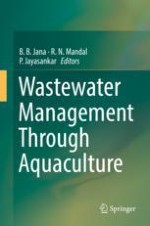2018 | OriginalPaper | Buchkapitel
3. Global Prospects for Safe Wastewater Reuse Through Aquaculture
verfasst von : Stuart W. Bunting, Peter Edwards
Erschienen in: Wastewater Management Through Aquaculture
Verlag: Springer Singapore
Aktivieren Sie unsere intelligente Suche, um passende Fachinhalte oder Patente zu finden.
Wählen Sie Textabschnitte aus um mit Künstlicher Intelligenz passenden Patente zu finden. powered by
Markieren Sie Textabschnitte, um KI-gestützt weitere passende Inhalte zu finden. powered by
